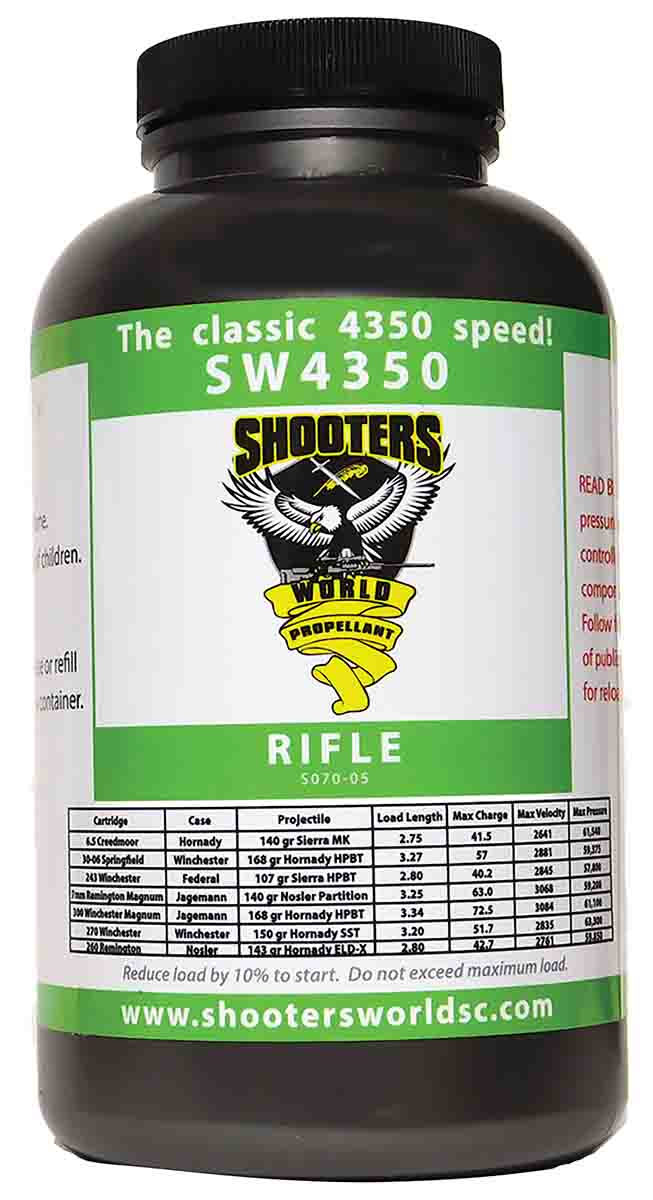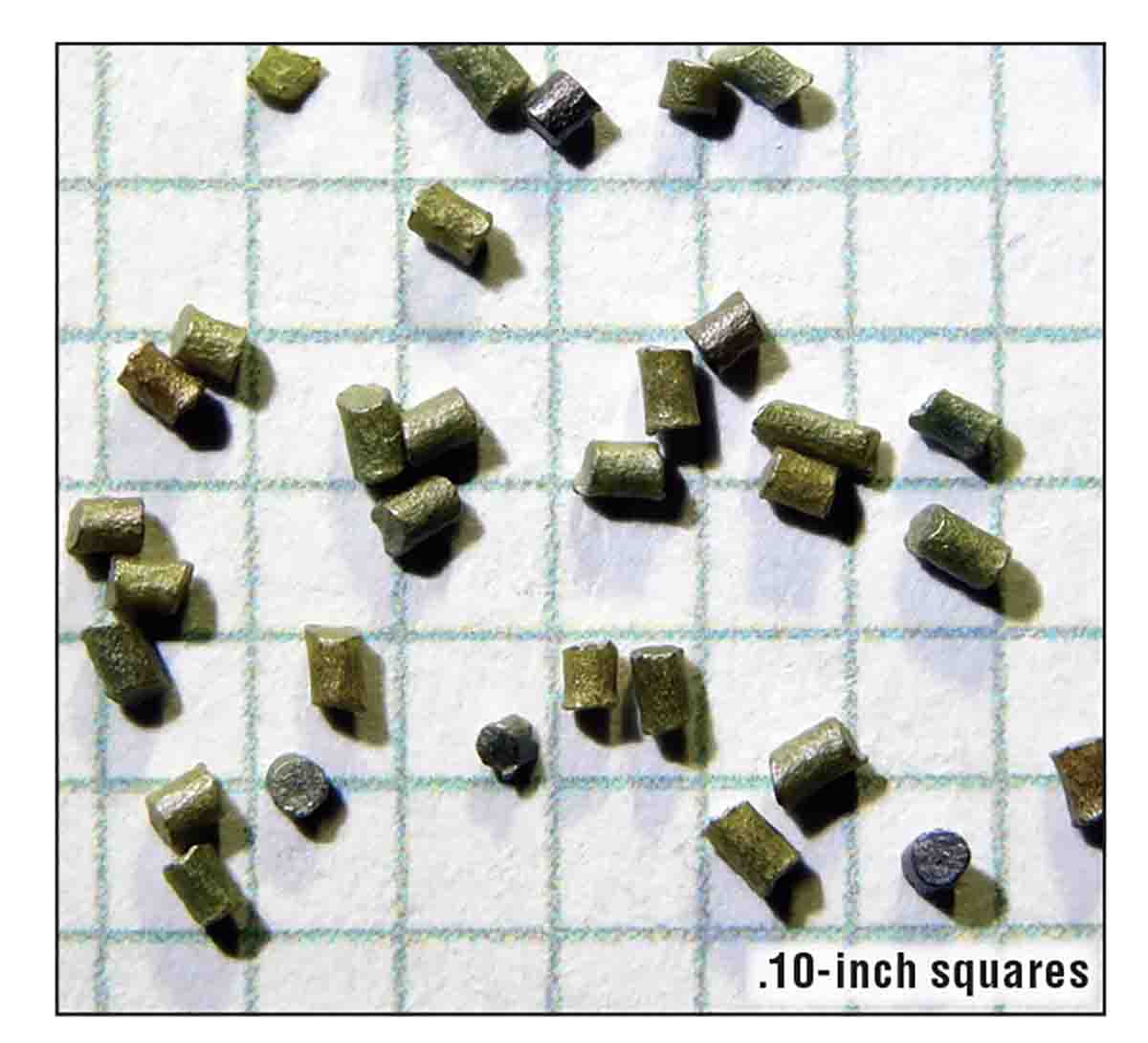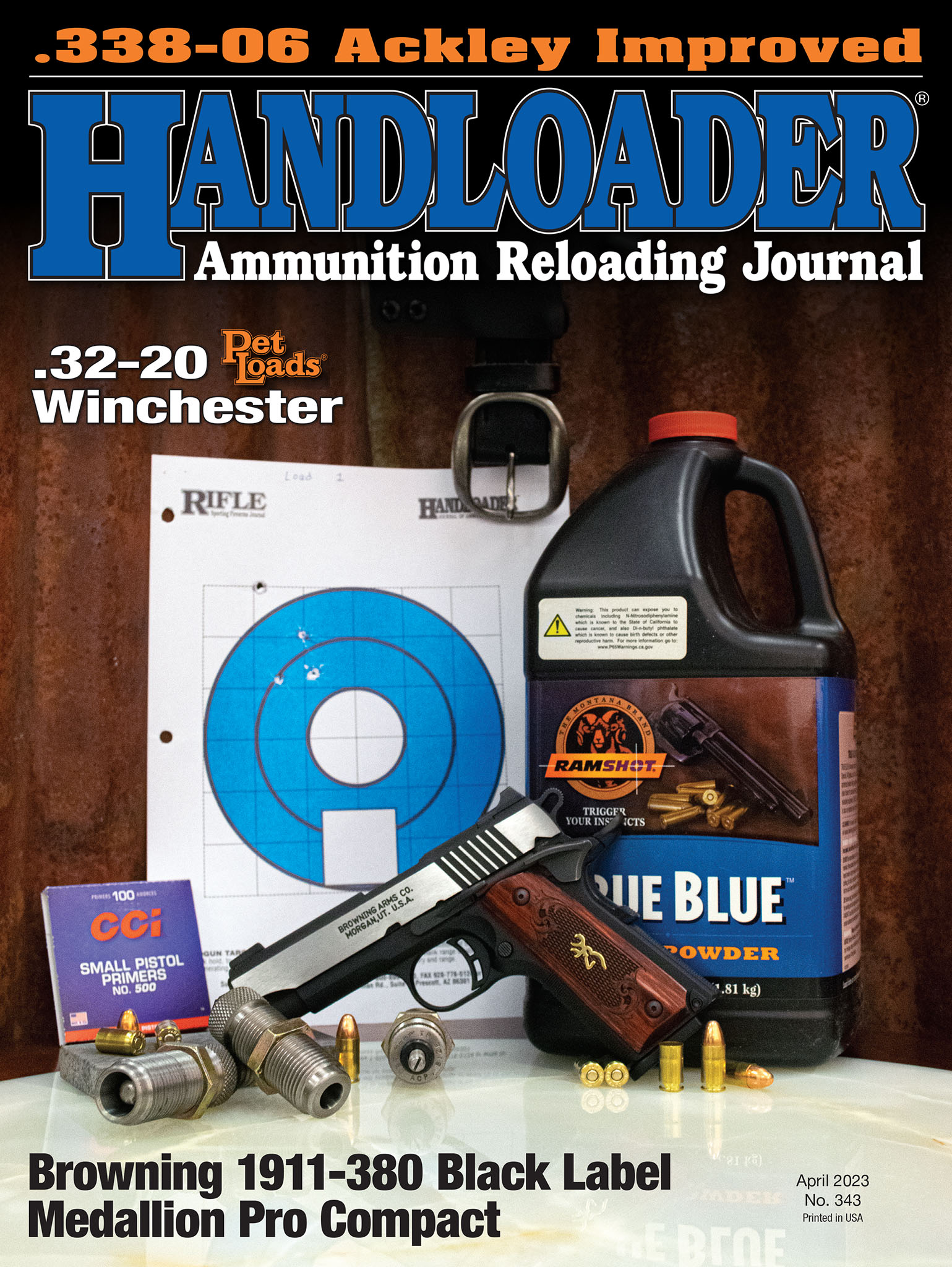Propellant Profiles
Shooters World SW-4350
column By: Rob Behr | April, 23

advent of IMR-4350, shooters who craved extreme velocities could finally realize significant performance increases from their rifles. IMR-4350 was the first powder to allow overbore cartridges designed by the likes of Holland and Holland, Winchester and Weatherby to realize its true potential.
Shooters World SW-4350 is one of four propellants marketed as some form of the classic 4350 burn rate, competing with offerings from Accurate, Hodgdon and the original IMR product. There is a potential for confusion between the brands and their respective data. These are not the same propellants with different labels. Their performance varies by burn rate and bulk density. Handloaders need to make sure their data matches the chosen powder.
SW-4350 is manufactured by Explosia, as in the Czech Republic and imported into the U.S. for packaging by Shooters World. As a manufacturer, Explosia has been in the propellant business since 1920 and is currently marketed in Europe under the Lovex brand.
In gross characteristics, SW-4350 is typical of the propellants in this class. It is a single-base extruded powder with about 90 percent of its total mass comprised of nitrocellulose. A flash suppressant takes up another .5 percent of the total weight. Its bulk density is .9 grams/cc. Comparing SW-4350 to IMR-4350, the former is much lighter gray and is noticeably shorter cut. This new geometry is important.
Grain geometry has long been one of the most effective methods of controlling burn rates in propellants. The original IMR-4350 still uses the larger grain size that it brought to the table in 1940. Modern chemical deterrents, applied after the creation of the energetic molecule, have allowed smaller sized powder grains to possess similar progressive-burning characteristics without the cumbersome size limitations. In the case of SW-4350, the powder grain averages .055 inch in length and .036 inch in diameter. They are 36 percent shorter than the IMR product that averages .085 inch. These dull numbers work out to one important boon for the handloader. SW-4350 meters well and gives consistent throws from a powder measure.
There are two very good sources of data when it comes to handloading with SW-4350. Shooters World has published a concisely-written guide that is free to download from its site. It lists 18 loads for SW-4350 running from the prairie dog busting .22-250 Remington to the classic dangerous game .375 H&H. The Lovex reloading guide lists this powder under the designation S070 and includes loads for a number of European cartridges including the 6.5x55mm Swedish, 7x57mm Mauser and 9.3x74mmR. This guide also includes loads for several lower-pressure cartridges that are typically associated with faster-burning propellants. These included data for the .30-30 Winchester, 7.62x39mm and .45-70 Government. The Lovex guide is also offered as a free download from ShootersWorldPowder.com.

When I’m testing velocity, I am much more concerned for my chronograph’s sky screens than I am about benchrest accuracy. Of the three, five-shot groups I fired through the Bergara, the second was tightest and produced a center-to-center group of .490 inch. I didn’t measure the other two, but both were only marginally larger, approximately .600 inch. Considering that this was a load based on data printed on the SW-4350 bottle label and never developed for accuracy, the combination seemed off to a promising start. I am confident that SW-4350 is capable of great accuracy in this cartridge.
I duplicated the Creedmoor loads using the same lot of unfired Hornaday cases and Federal 210M primers, but this time, using IMR-4350. The same charge of 41 grains produced an average velocity of 2,640 fps, representing almost an 8 percent increase in velocity. The extreme spread was a disappointing 116 fps with a standard deviation 56.8 fps.
The rest of the afternoon revealed that the low extreme spreads seen in my Creedmoor were consistent with all the cartridges tested. Even my beat-up, but much-loved CZ/BRNO ZKK-602 in .375 Holland and Holland, produced an extreme spread of just over 30 fps. I’ll admit there are things I’d rather do than velocity test that rifle and I avoid it if possible. But when I have tested it over a chronograph, it has never produced such consistent numbers. It is obvious the Czech’s have something special going on with SW-4350. I was curious what made the powder so consistent and contacted Shooters World ballistician Ken Johnson for answers.
Ken Johnson has an enviable reputation as both a world-class rifleman and a technical genius when it comes to propellants. He agreed that SW-4350 was slow for its stated burn rate and placed it on a burn-rate chart somewhere between the traditional IMR-4350 and Hodgdon H-4831. When I asked him about the unusually low standard deviations I was seeing with my lot, he didn’t seem surprised. He attributed the consistency to enhanced ignition characteristics inherent to the powder. “They have really done their homework,” he said.
Yes, I believe they have.
.jpg)


